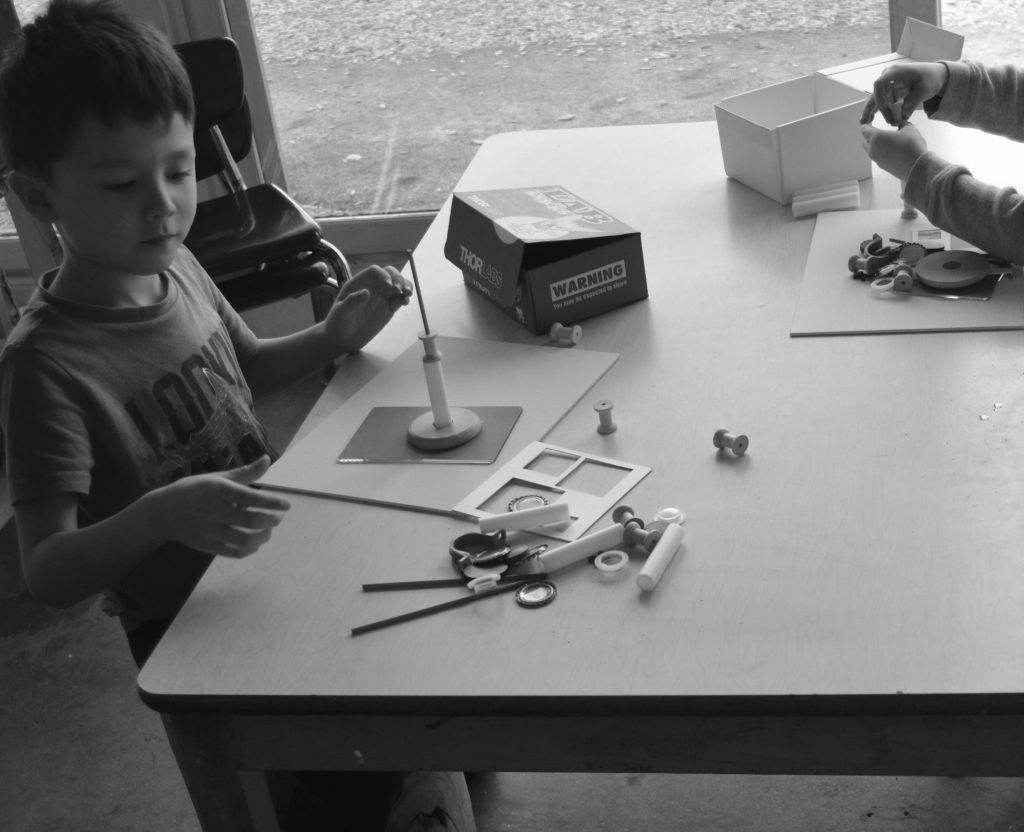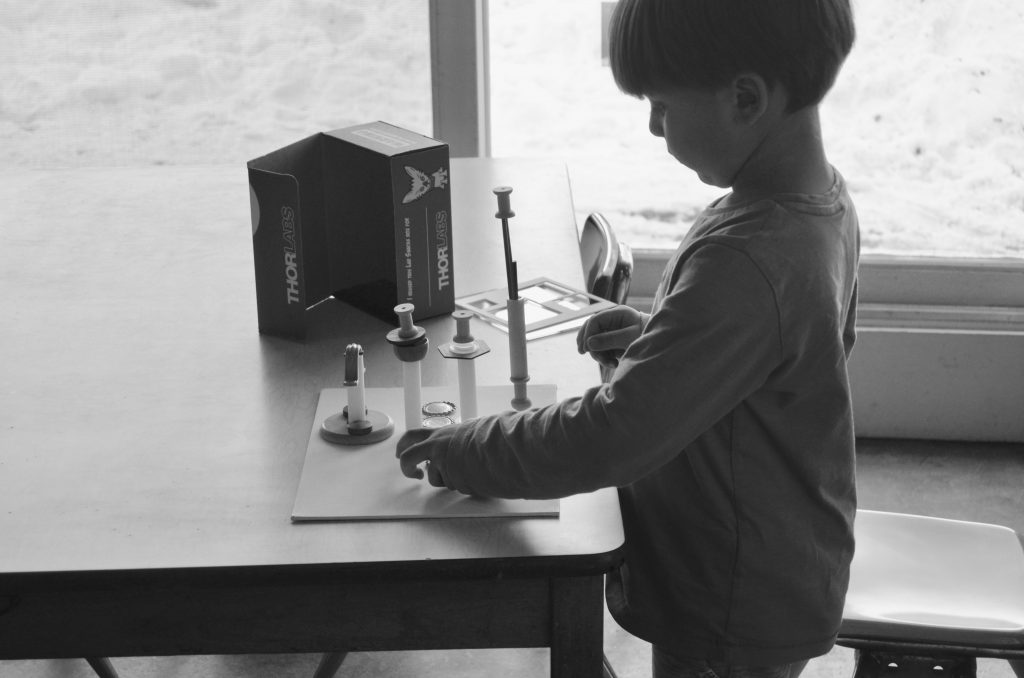In the 1970’s an architect by the name of Simon Nicholson introduced his theory of loose parts. He believed that it was the loose parts in our environment that empower our creativity.
Loose parts are flexible. They can be moved, carried, combined, redesigned, lined up, taken apart and put back together in multiple ways. They come with no specific set of directions. They can be used alone or combined with other materials. As they use loose parts, children engage in critical thinking skills. They generate their own ideas, make them the way they decide, and figure out how to make their ideas work.
“Loose parts have a life, a language, their equal complexity and simplicity provide children with a way of communicating that lends itself to advanced problem solving, dramatic play, storytelling, fantasy, engineering, mathematics, and communication, just to name a few.” Guardian Early Learning Group, Australia
Recently, we introduced our afternoon group to story boxes. Each story box was filled with the same loose parts. Each box was filled with myriad possibilities…

Finally I have an idea!
Look what I discovered!
I’m making an obstacle course. Look what I did, you need to get through here.
For my idea I need two of these. Huh, I only have one.
I want to build a ginormous mushroom…
Maybe this will work.
And maybe I can do this.

You have to play a trick on the mirror.
It totally works, I think I can do it!
It’s getting harder.

I did me swimming. When I stayed super super late. They (the fountains) came on. They poured and I could go under and there was a slide. It’s super fun. This is going to be the building.
This is tricky, but fun.



I think the song is helping me!
It’s a turtle.
This is so frustrating!
I’m not that happy.
It broke again. I’m going to try a different way.
It won’t stand. It’s too heavy.
I need glue!
Let me think.
Look, it’s balanced!




